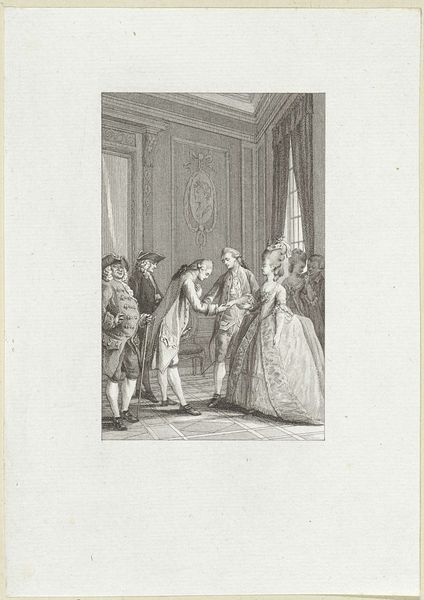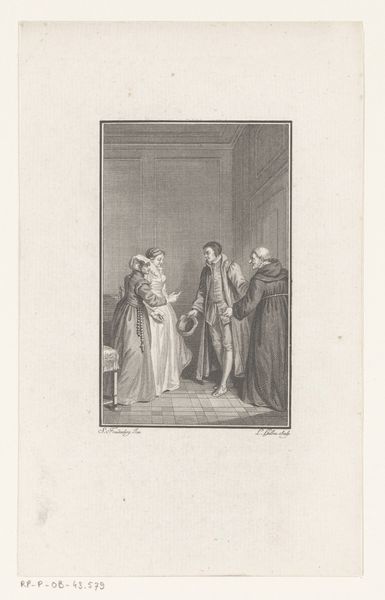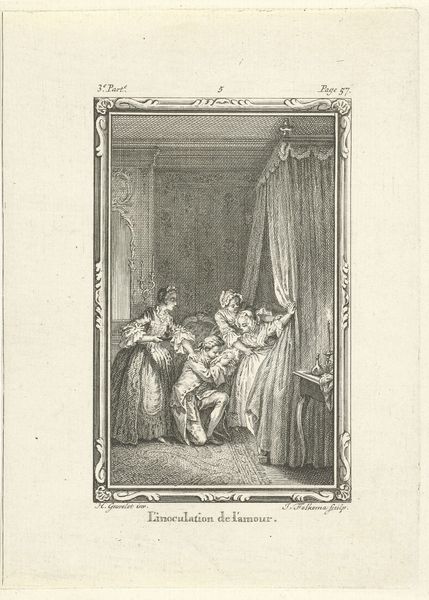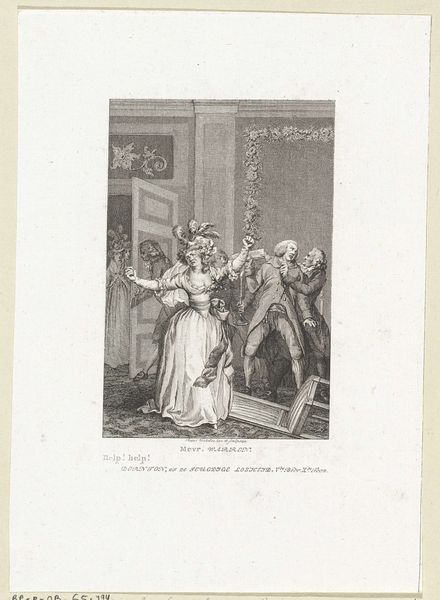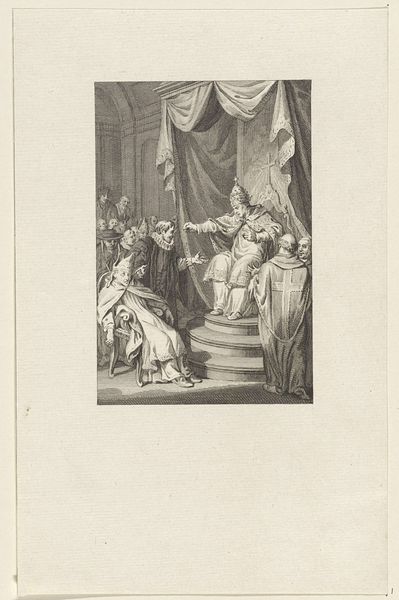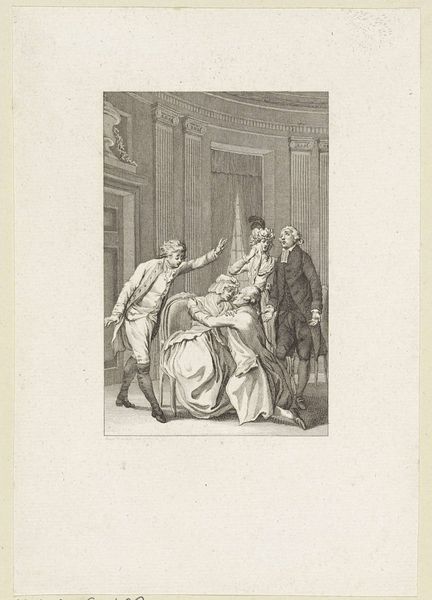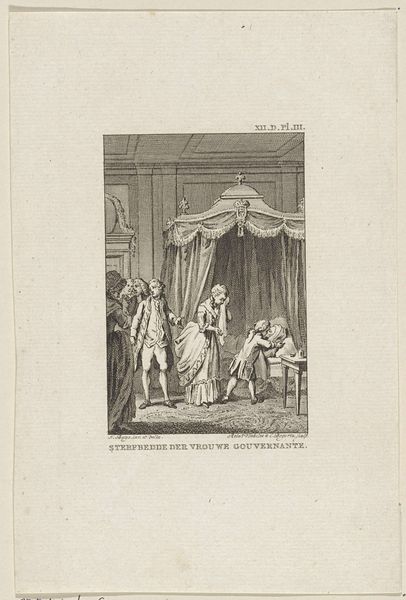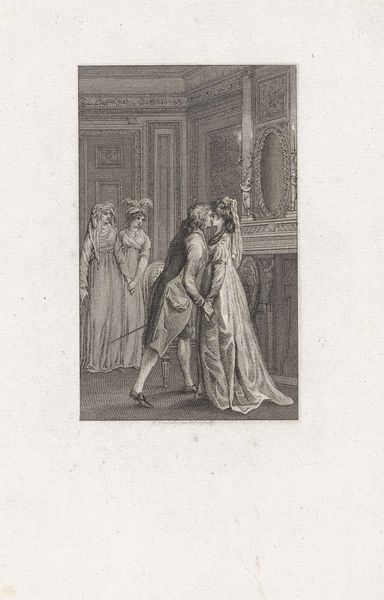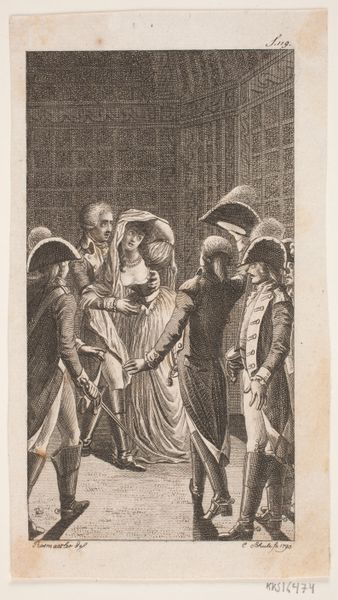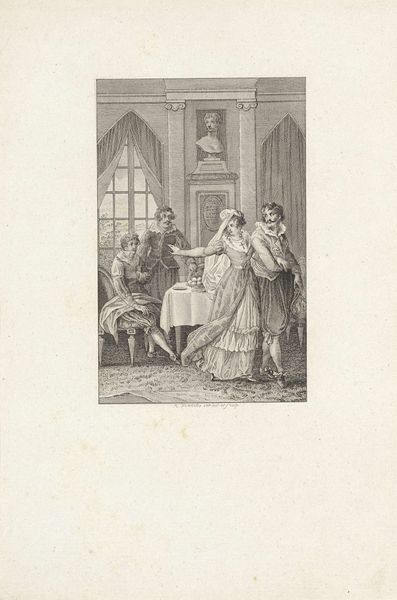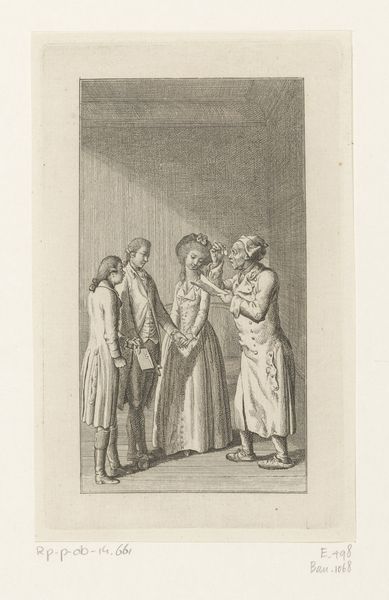
Dimensions: height 205 mm, width 145 mm
Copyright: Rijks Museum: Open Domain
Editor: So, this is "Verliefd dansend paar," or "Loving Dancing Couple," created in 1788 by Reinier Vinkeles. It’s an engraving done with pen on paper, and it just strikes me as… wonderfully theatrical. What do you make of it? Curator: The high-society ballroom becomes a stage, doesn’t it? Look at how Vinkeles uses line and shadow to cast the couple in an almost operatic spotlight. Observe their embrace, a whirlwind of silk and feathers. What emotional currents do you perceive in their dance? Editor: I guess the joy is hard to miss. All that flurry seems very outward-facing, almost like they're performing for everyone else. Is that a typical theme in art from this time period? Curator: Indeed. Consider how clothing, especially, functions as a powerful signifier in art and society during the late 18th century. Each element—the cut of a coat, the placement of a plume—communicates layers of meaning: status, desire, aspiration. Does this symbol system seem to constrict or liberate these figures? Editor: I see what you mean. There is so much detail packed into the clothing. Is there a reason it is not in color? Curator: The deliberate choice of black and white amplifies the graphic intensity. It allows the sharp lines and textures to tell a more pronounced story. It freezes the scene in time. A play with memory, no? What memories do you think it evokes? Editor: It makes me think about how the idea of "love" must have been quite codified, so full of codes that defined love and class and propriety. Thanks, I see this piece differently now. Curator: My pleasure. It’s precisely that intersection of personal feeling and public performance that defines so much art from this era. There is meaning coded within those feathered hats that is just waiting to be explored!
Comments
No comments
Be the first to comment and join the conversation on the ultimate creative platform.
